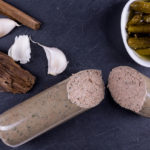A Better Whey to Recover
How many people do you know who feel they need to recover from a workout with a smoothie made with a whey- based protein powder? And how many of those people differentiate between recovering from a six hour Ironman training ride and a one hour strength session in the gym? Through no fault of their own, athletes to weekend warriors to those participating in HITT tend to follow many of the same recommendations perpetuated by the media (as in: drink whey-based recovery drinks) including the misconception that we all need to drink a pre-made ‘recovery shake in a box’. Often, these contain whey (often touted as being the very best type of protein powder), and sometimes added sugars, both real and artificial, flavors, also fake as well as other ingredients sometimes unidentifiable as food. Perhaps my favorite example is the idea that good old chocolate milk makes a great recovery drink option. First of all, if you’re recovering from a strength session, what you’ll need to repair and recover is vastly different from recovering from a long endurance session. I go in to a lot more detail in Pocket Paleo, Workout, but suffice it to say that an hour long strength training session, ideally done in a fasted state, relies on a different fueling system compared to being out on the bike for six hours. Neither scenario are such that whey is a requirement. Rehydrating is always priority number one (stay tuned for an upcoming post this week on just how much), and then, refueling. But if you’re keeping your True Paleo regime day in and day out to the best of your ability, why throw a package of chocolate milk or a powder, such as this example of one of GNC’s products made with Whey, Artificial Flavors, Sodium Chloride, Acesulfame Potassium, Sucralose, Soy Lecithin, Potassium Citrate into the mix? How about…food? One of my favorite recovery drinks for my endurance training sessions is made following an easy recipe including natural sugars from fruit (after an endurance session is one of the few times high glycemic carbs make sense), such as a ripe, spotty banana, easily digestible proteins like chilled, soft boiled eggs (or raw, farm fresh, if available) and a host of my favorite anti inflammatory spices like ginger, turmeric and cinnamon. There is a time and place whereby you may not be able to find farm fresh eggs, or you may be traveling, and it is in this scenario when I’ll use a protein (made of egg and beef); however the take away message here is not to feel the need to have protein powder as a supplement (that phrase always makes me giggle a little, too; as if one of the three macro nutrients could be an after thought) on a day to day basis after every single workout, regardless of type, duration and intensity. Do your training, recover with real food and then, when your body tells you it’s time, eat your next True Paleo balanced meal consisting of veggies, fat and protein, sourced humanely, and with as much variety as you can possibly implement. Real food= clean fuel = optimal performance!





